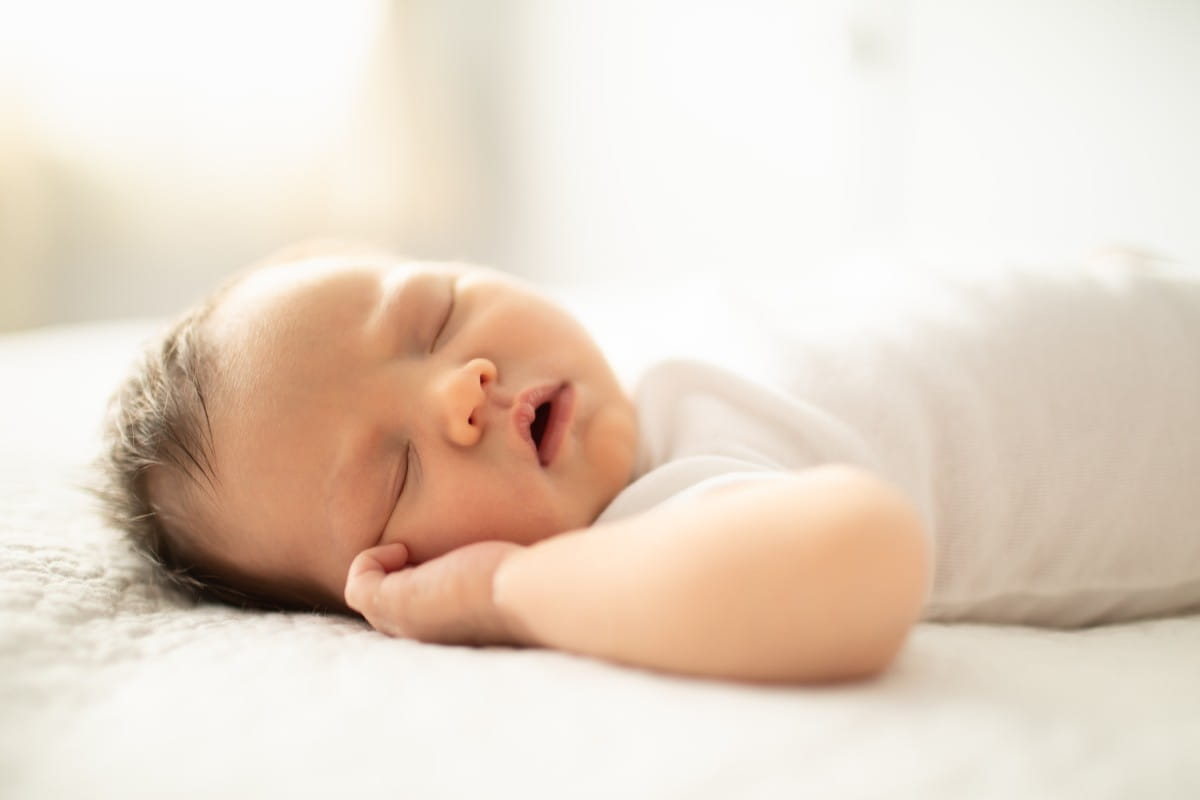We’ve all heard the saying “to sleep like a baby.” It means to sleep well. And isn’t it true? There’s nothing more precious or peaceful than the sweet face of a sleeping child. Even so, all parents know getting a baby to sleep takes work.
If you’re an exhausted parent or caregiver of an infant, you might be willing to try anything to get rest. But before you put baby down on their belly or in bed with you, stop and read the rules for safe sleep. According to the Centers for Disease Control and Prevention, around 3,400 babies in the U.S. die suddenly and unexpectedly every year. These deaths often occur while a baby is sleeping or lying in their sleep area.
“Good sleep for baby starts with safe sleep,” says Elias Tessema, M.D., a neonatologist in the Riverside Regional Medical Center’s Level III Neonatal ICU (NICU). “When you follow the safe sleep guidelines, you protect your baby from accidental suffocation or sleep-related death.”
All major pediatric health organizations in the United States recommend these evidence-based guidelines. Following them protects babies from sudden unexpected infant death (SUID).
Safe sleep for baby is as easy as ABC.
Pediatricians and researchers stress three fundamental rules for safe sleep, called “The ABCs of Safe Sleep.” Doctors recommend that all parents and caregivers follow these ABCs until a child turns 1:
- A is for ALONE. Babies should sleep alone, not with anyone else — not even with a twin.
- B is for BACK. Babies should always be put down to sleep on their backs. (If your baby starts to roll over on their own, it’s OK to let them sleep that way.)
- C is for CRIB. Babies should only sleep in a safe crib or play yard with a snug mattress and tight-fitting sheet. There should be nothing else in the crib or play yard — no blankets, bumper pads, pillows, stuffed animals, etc. Use an infant sleep slack or a one-piece sleeper to keep baby warm.
“These three simple rules greatly decrease the risk of SUID,” says Dr. Tessema.
Safe sleep for baby also means following these additional guidelines.
In addition to the ABCs of Safe Sleep, you can further reduce your baby’s risk of SUID by sticking to these additional safe sleep rules:
- Although your baby should sleep alone in their crib or play yard, the crib or play yard should be in your room. This is called “room-sharing.” The crib or play yard should stay in your room until your baby is at least 6 months old or up to 1 year old.
- Your baby should never sleep on adult beds, air mattresses or other soft mattresses, bean bags, or couches.
- Your baby should not regularly sleep in a car seat, an infant seat, a recliner, a Rock and Play, or a swing. This means you only put them down to sleep in infant care products labeled as a bassinet, crib or play yard.
- Breastfeed your baby.
- Keep your room at a comfortable temperature to ensure your baby doesn’t get too hot when sleeping.
- Keep your baby away from cigarette smoke.
- Offer a pacifier to your baby at naptime or bedtime.
- Keep your baby up-to-date on their immunizations.
- Don’t use devices that claim to reduce the risk of sudden infant death syndrome (SIDS).
- Avoid using drugs or alcohol while caring for your baby.
- Do supervised, awake tummy time to help your baby strengthen the muscles needed to roll themselves over.
Research supports safe sleep guidelines.
Research backs up the use of safe sleep guidelines to reduce the risk of SUID during sleep.
“When you follow these guidelines, know that they do matter. Studies show that they absolutely do protect babies,” Dr. Tessema says.
The research results for safe sleep practices are compelling. Some of the evidence includes:
- The rate of sleep-related infant death declined significantly in the 1990s after doctors began recommending that babies be put down to sleep on their backs.
- Room-sharing decreases the risk of SIDS by as much as 50%.
- Studies show an association between breastfeeding and a reduced risk of SIDS.
- Studies show an increased risk of SIDS with overheating.
- Evidence suggests that keeping your baby up-to-date on their immunizations may protect against SIDS.
If baby won’t let you rest, don’t throw out safe sleep guidelines. Get help.
It can take time for some infants to get comfortable with being placed on their backs for sleep.
“Many young babies prefer to be held to sleep, and that’s OK. But that doesn’t make for good rest for parents because it’s not safe to fall asleep while holding your baby,” explains Dr. Tessema.
This is where it’s important to ask a trusted family member or friend for help.
“Even if they can come over for a couple of hours during the day to watch the baby while you get some sleep, that’s helpful,” Dr. Tessema says.
Lastly, be sure every person who cares for your baby knows and follows the safe sleep guidelines when watching your baby.
Whether you’re looking for trusted baby care advice or it’s time for your child’s well-baby visit, the primary care providers at Riverside can help. Find a provider near you.
Additional Resources:
Safe Products for your baby:
Product Safety Resources:
- Consumer Product Safety Commission (CPSC)
- ASTM International (ASTM)
- Juvenile Products Manufacturers Association (JPMA)
Cribs for Kids Monthly Newsletters
- The newsletters can be found in the Hospital Certification Toolkit
